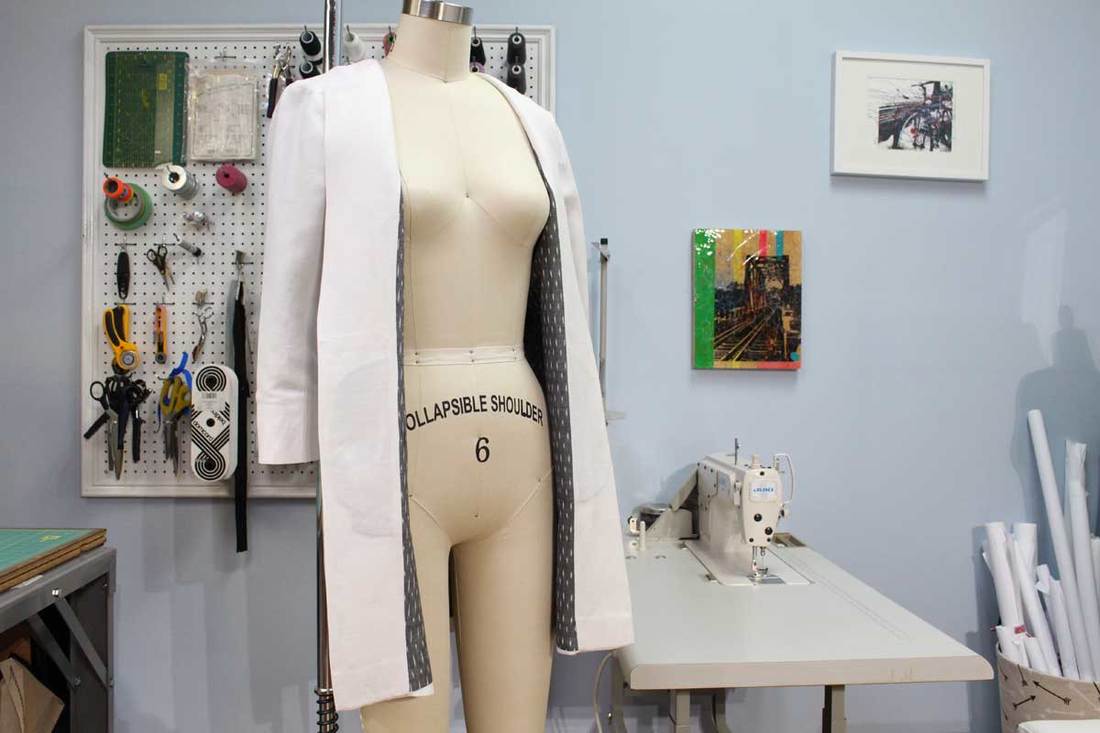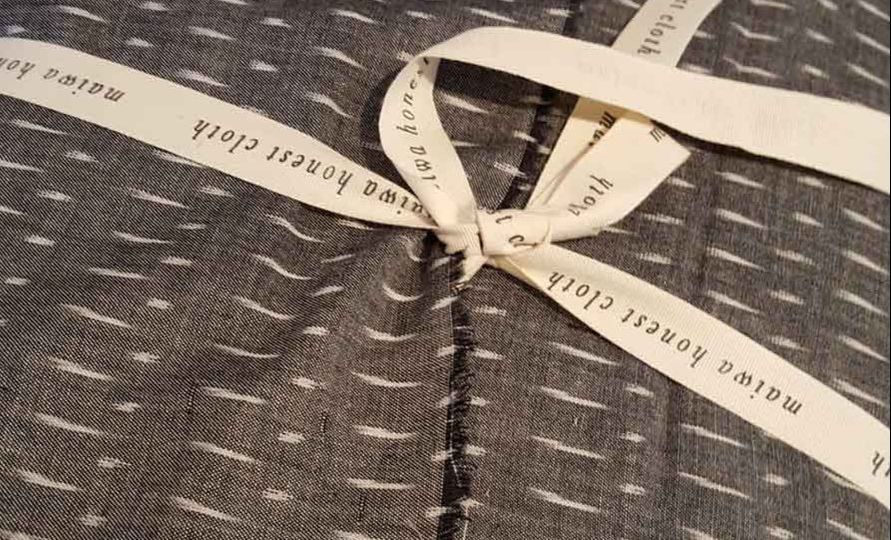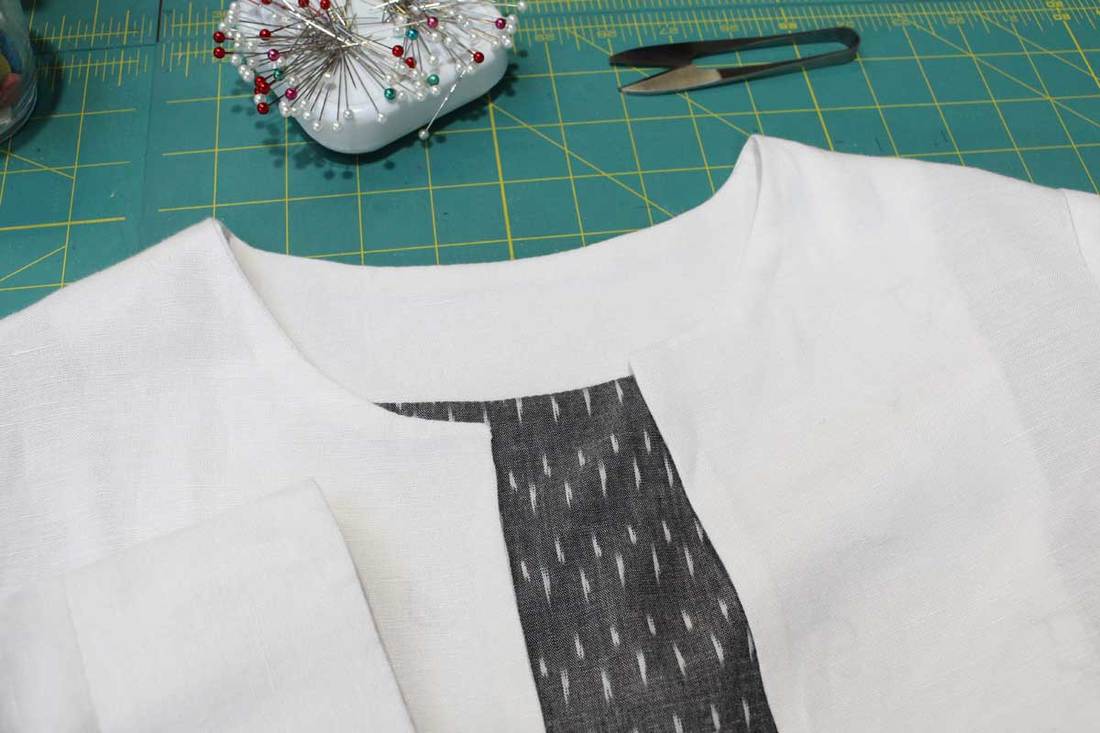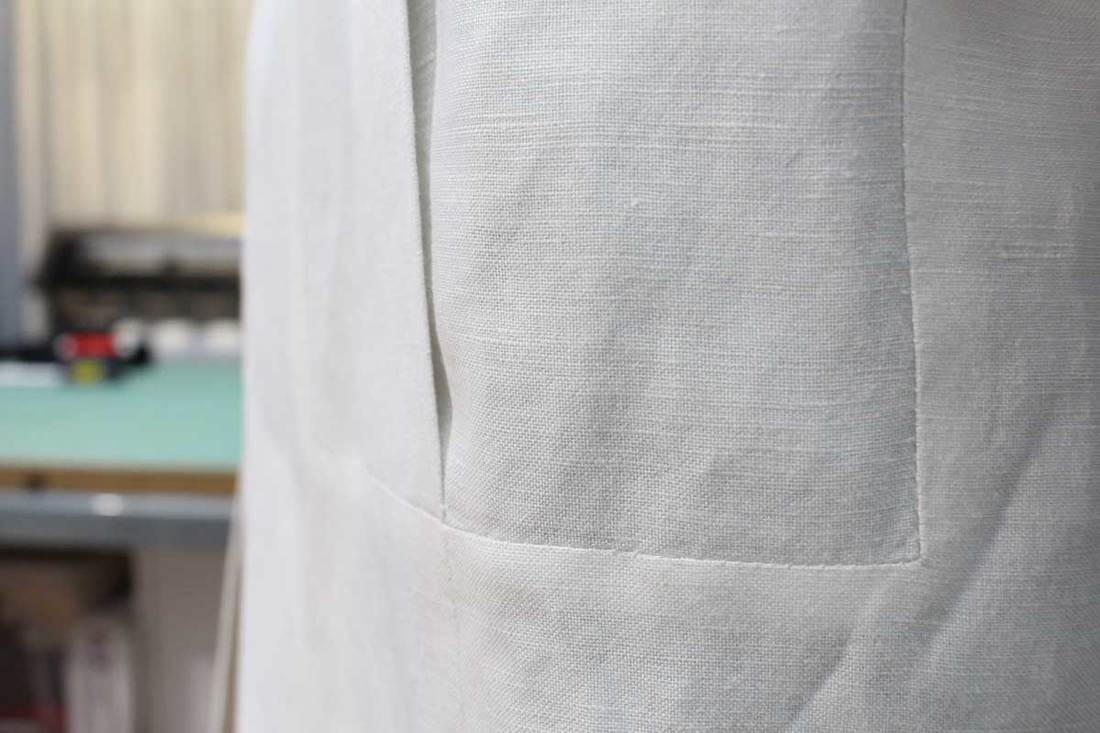|
I love a good white jacket, it reminds me kinda like a lab coat. We used our mad scientist skills to tame complex in-set corners, in-set sleeves and non traditional lining. In this post, I get behind the seams, showcasing the inspiration and the important design elements. I also share with you the challenges and what I learned. Project Specs
Reverse Pattern CuttingBack in the winter of 2017, I taught a 2 day reverse pattern drafting workshop at Maiwa School of Textiles. Reverse pattern drafting is all about extracting a pattern from an already made garment. In below example, I demonstrated the pattern extraction process from a Zara jacket. This is the base of this blogs inspiration! If you look carefully, you will notice many pattern pieces make up this jacket. I like to call it the 'Tetris Jacket'. FabricFabric inspiration came directly from below ikat fabric from the Maiwa supply shop in Granville Island. This ikat fabric is hand woven, which in my mind makes it so special to wear. We used the same fabric on a vintage bow blouse design too. Keep an eye out for that blog post in the coming months. For the past year, we have been making a conscious effort to use up fabric in studio before buying anything new. We had just enough white linen left-over from when we made a white linen summer dress. What worked in our favor was the many small pattern pieces that made up this jacket design. We where able to use up smaller bits of left-over fabric. You can find this linen from Fabricana in Richmond. Design ElementsFirst glance at this garment, it looks fairly simple in design. But there are many advanced technical design elements involved. In-set sleeves, lining, in-seam pockets, facings, and in-set corners. Kinda like peeling back an onion! Have a tissue handy as you read on. JK! LiningI feel the lining is the silent hero in this jacket. I do not mind breaking rules. Using non-traditional darker lining in comparison to the outside lighter colored fabric may not have been the best decision, but you never know until you try. I am a firm believer in pushing the boundaries of your comfort zone. If your risks work, its such a rewarding payoff. If they do not, you have just learned a great deal of knowledge! Read on as I ended up learning a lot in this situation. In-seam PocketsThis is technically a in-seam pocket with a facing. It worked well in this situation to hide the darker colored lining fabric from peeking out. The pocket along side the in-set corners, was probably the most challenging elements to stitch. The opening of the pocket is centered within a vertical rectangle seam which has in-set corners. The opening of the pocket was also lined up to an adjoining seam above and below this area of the jacket. Basically many seams of this tetris jacket came together right at the pocket. If you where off by a 1/16" anywhere else in the jacket this is where it all showed its ugliness. Collarless with FacingsNo collar?! Yes please. Minimalist designs can be found all over right now. I like the idea of being able to layer with a collared shirt underneath. Changes up the look with each new shirt. We applied a 4 inch width front facing from the hem up the center front, then narrowed it down over the shoulder towards the center back. Edge stitching was applied around the neckline, to keep facings 'facing' your body only. In-set Corner SeamsI already started talking about the complex pocket section earlier. Here is a closer look at the in-set corners surrounding the pocket. To add strength to the exterior part of the in-set corner, we fused a small bit of interfacing. When you clip the seam allowance towards the corner, the small bit of interfacing will strengthen the fabric from ripping away over time. So never throw away scraps of interfacing, they can be used in these areas. What I learned!The biggest thing I learned from this design is an obvious one! If your lining is darker than your exterior fabric, most likely the lining fabric will show through. In our case, the white linen was kinda sheer. The lining doesn't show through dramatically, but after many wears the raw edge of the darker lining fabric starts to show through. If we where to create this design again with the same white linen, an interlining would be required to ensure a solid separation between the exterior and lining fabric. The interlining could be basted to the exterior fabric. Another option, would be to finish the raw edge of the lining prior to closing up the lining to the exterior jacket. What would you do? Please share your ideas below in the comments. Final DesignHappy Sewing!
Designed, photographed and written by Sheila Wong Studios.
1 Comment
6/29/2019 11:54:57 pm
Most of the time, we associate white linen jacket to medical practitioners like doctors. But the truth is, we can explore and make some fashion out of it. All we need to do is be creative and be confident and for sure, you will be able to wear what white linen jacket in a most fashionable way! Sheila Wong, the photographer of these shots were able to give a different kind of beauty to these photos that's why there is no reason for me not to be amazed by it!
Reply
Leave a Reply. |
Archives
November 2022
|
Copyright © 2024 Sheila Wong Fashion Design Studio Ltd. All rights reserved.












 RSS Feed
RSS Feed
